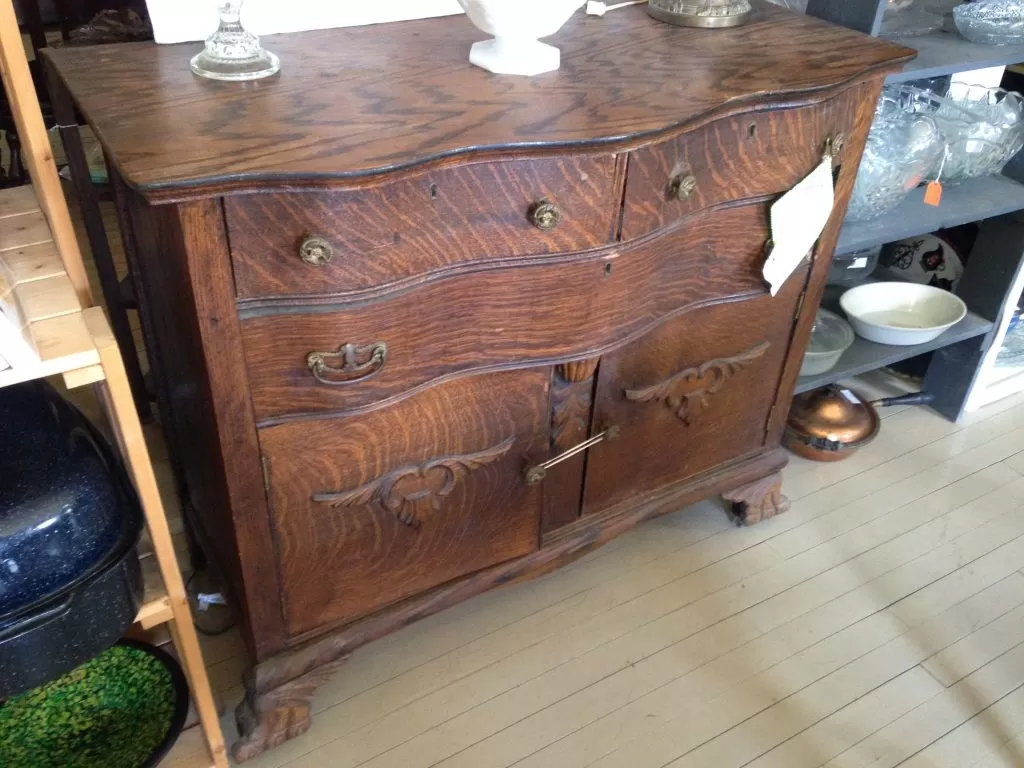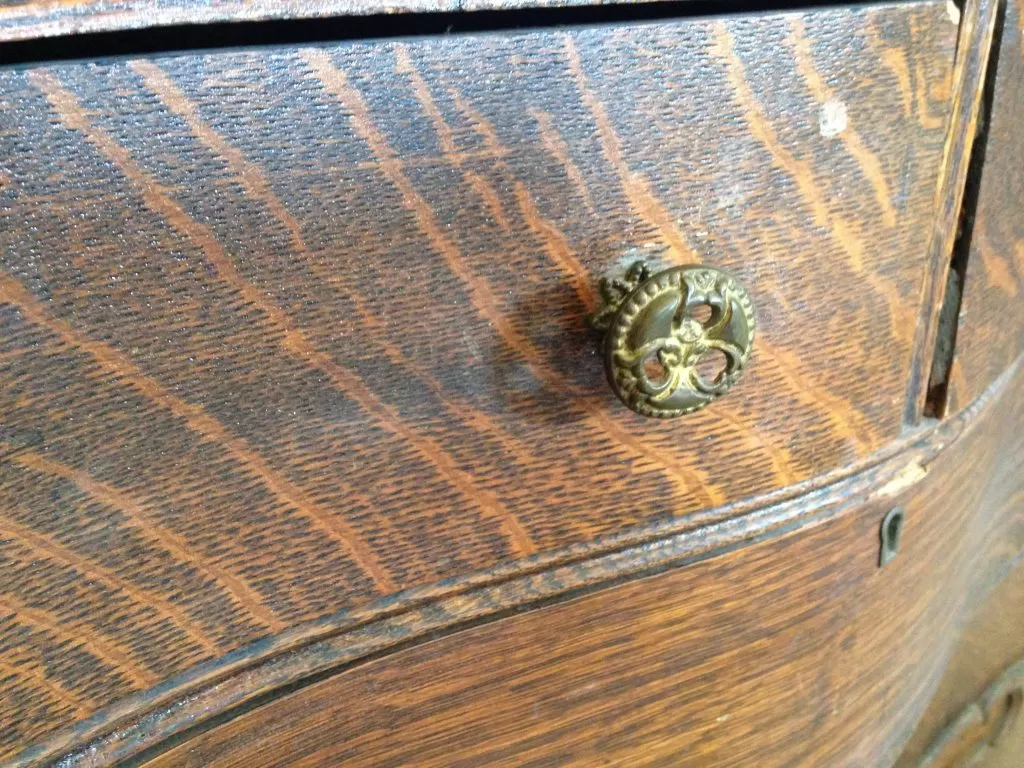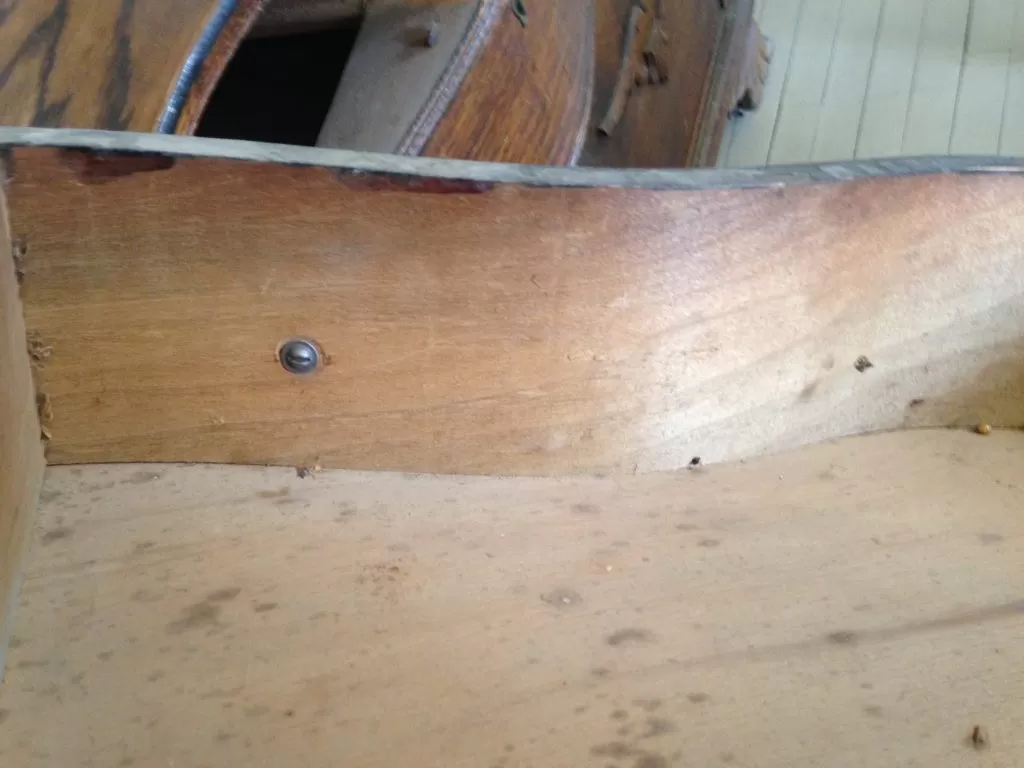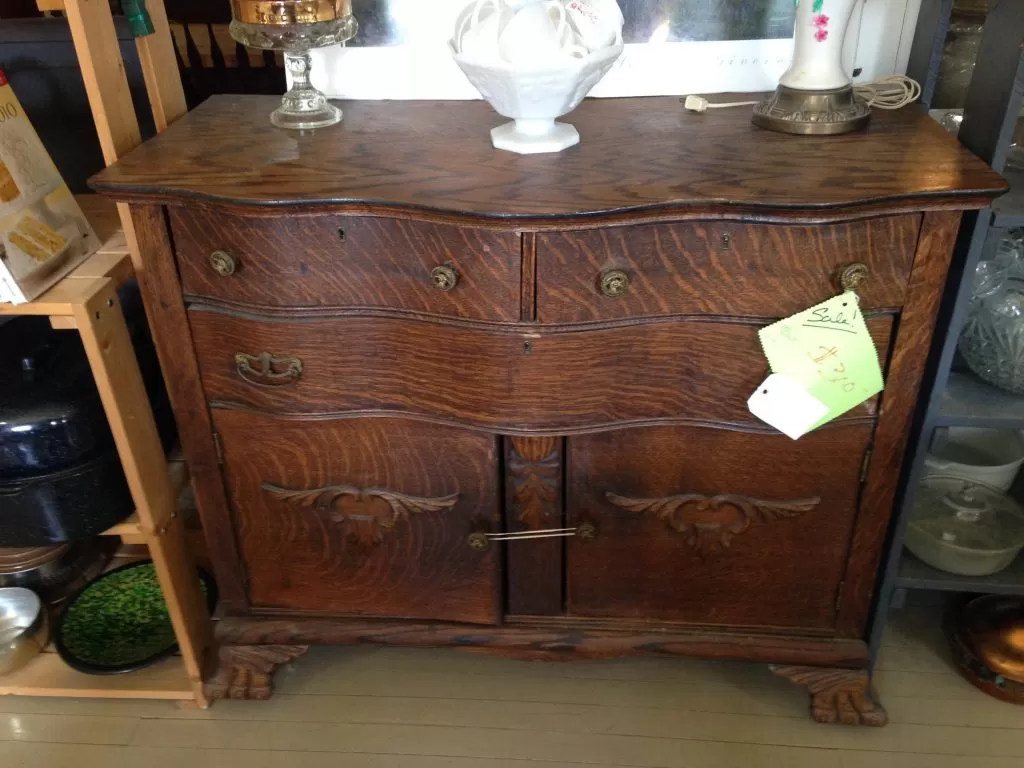Furniture Detective: False Graining
If its too good to be true, sometimes it just isn’t.
The craft of false graining dates back centuries, as artisans soon realized they could duplicate the color and grain pattern of a more expensive, exotic wood atop a plain, inexpensive wood. While Arts and Crafts furniture has not been plagued by examples of false graining, I have seen it on several library tables. The problem, of course, is that if the thin layer of glazing gets damaged, scratched, scuffed, or cleaned with a strong chemical, it will disappear, leaving a blank spot in its place.

I spotted this late Victorian dresser in a Midwest antiques mall recently, which is a perfect example of what the Arts and Crafts movement rebelled against: flimsy hardware, shoddy construction, applied carving, and false graining.

The uniform grain pattern on the top was my first clue that the dresser was not what it appeared to be…..

And the perfectly uniform quartersawn grain on the drawer fronts made me even more suspicious. How to prove it?

Easy — just look on the back side of the board. If it is legitimate, the grain pattern will be the same on both sides. In this case, the drawer front appears to be gum wood, with a bland grain pattern that in no way resembles quartersawn oak — and that was very receptive to false graining.

And while you might never be tempted to buy this late Victorian dresser, never pass up the opportunity to learn something that will benefit you later.
– Bruce Johnson
